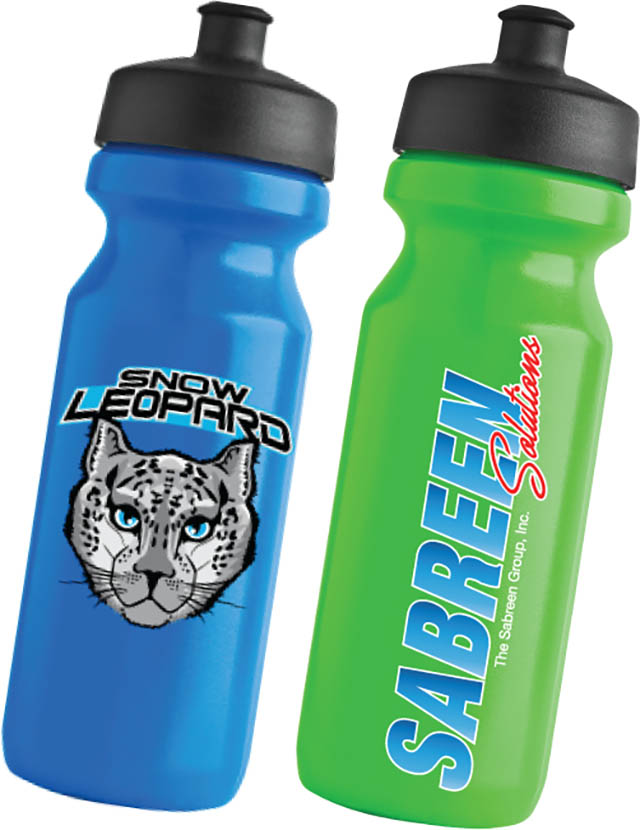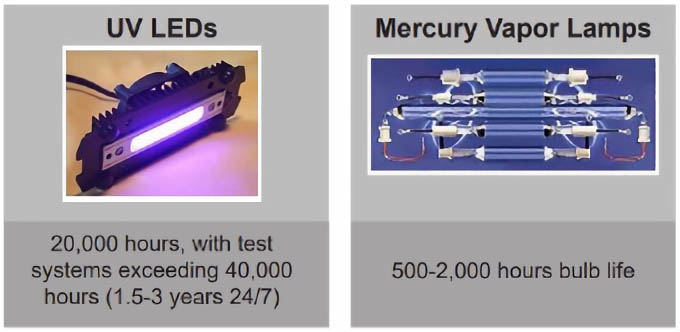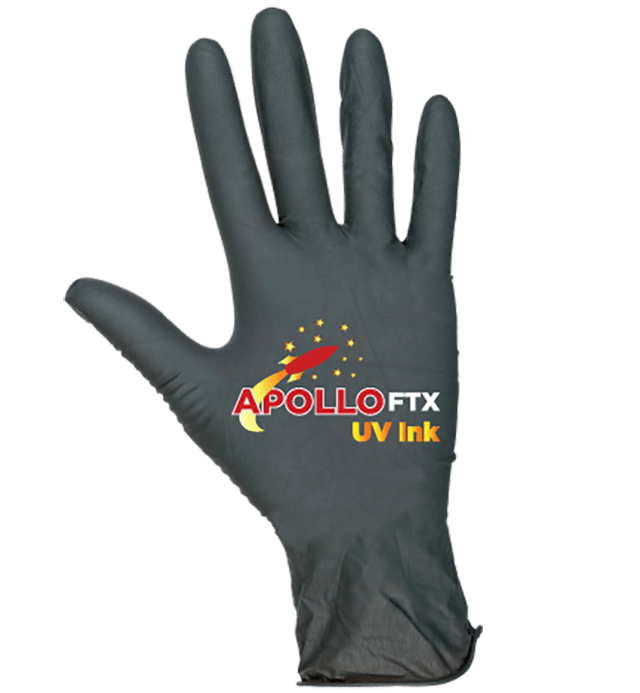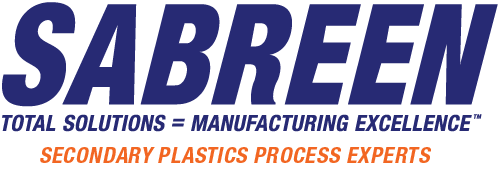UV LED-curable flexible inks for color printing of flexible/stretchable and wearable plastics products is one of the newest advancements in industrial inkjet technology. Customizable vivid images and two-dimensional codes are jetted onto a variety of flexible polymer products such as polyolefin bottles, athletic exercise stretch bands and elastomeric/rubber wearables without cracking or distorting the printed image with high percentage stretch elongation. This breakthrough incorporates a new proprietary full-color gamut UV LED flexible ink that is toxicity and biocompatibility certified for specific applications.

Demand for Customized Wearables
The terms “wearables,” “wearable devices” and “wearable technology” all refer to electronic technologies or computers that can be worn by a consumer and often include tracking information related to health and fitness. Swimming caps, exercise stretch resistive bands, headgear, hajibs, sweatbands, cycling/running gear, wristwear, glasses, gloves, arm wear, legwear, footwear, skin patches, exoskeletons, and e-textiles are involved, and the device business is enormous. Products can be rigid or flexible.
The demand for customization drives sales, whether it’s health and fitness performance products, smartwatches, or the hundreds of alternative interactive band products. Leading market research company IDTechEx claims that wearable products are thriving, with a total market worth over $50 billion in 2019, having more than doubled in size since 2014. Bain & Company states, “By providing customization, brands raise loyalty at a time when it’s more important than ever.
Sellers are discovering the value of letting customers create their own unique products.” Retailers like Amazon use big data to present a personalized set of products to its customers. Now, brands are taking personalization a big step forward into mass customization. Companies that offer customization can use consumers as merchants, continuously gaining insights from customized designs and fine-tuning products in a feedback loop that helps companies stay ahead of the competition.
Total Process Solutions
Piezoelectric drop-on-demand UV inkjet printing is far more complex and delicate than analog printing. Inkjet requires the nozzles to fire precisely sized drops with exact accuracy. High quality inkjet printing systems must simultaneously integrate printheads, fluids, controllers, pretreatment and cure. Safety certification of inkjet fluids and cure is critical. To achieve robust printing on temperature-sensitive, flexible polymer materials, users must incorporate matching UV LED flexible inks and an LED cure system.
Application substrates include nitrile, vinyl, PVC, polyolefins, thermoplastic elastomers (TPE), cast polyethylenes (CPE), latex, polyurethanes and neoprene. Additional applications are flexible packaging films, flexible printed electronics and stretchable interconnects.
UV LED Cure Ink, Consumer Safety Certification
A new UV LED cure inkjet ink, Apollo FTX Ink series, has been formulated and qualified to be safe for adults and children (contact with human skin) per ASTM D 4236 (LHAMA – 16 CFR 1500.14). More than just another ink, this chemistry is precisely matched to specific UV LED cure specifications. This ensures robust final cure properties and aesthetics, not under-cure (tacky) or over-cure (brittle). The challenge in the design of inkjet inks stems from the importance of developing ink in synergy with a specific printhead. The fluid chemistry and physics of jetting each ink drop must behave precisely and consistently to run under extreme conditions, which is necessary for drop-on-demand printing operations.
This new ink demonstrates high consistency of flow (stable rheological behavior) and exit contact angle of the ink leaving the nozzle (consistent jet break-up). This new ink possesses exceptional substrate wetting and adhesion and intermolecular adhesion between white ink (base layer) and full gamut colors. Surface pretreatment is not necessary on some low-energy substrate materials that have traditionally been difficult to print, e.g., nitrile rubber and latex. These features allow for high-speed, in-line, single-pass inkjet printing. Dispersing pigments to a precise particle size and maintaining separation is critical for jetting performance and print quality. UV-curable inks consist of four components: monomers, oligomers, pigments and photo initiators.
Particles that are too large or agglomerated would compromise jetting accuracy, resulting in unacceptable print quality. The greater part of any dry ink is the binder – it traps the color in place, protects it from abrasion, and bonds to the surface. The binder typically is a polymer. UV ink printing differs from other types because the polymer is formed during curing by chain reaction of monomers and oligomers. Monomers are low viscosity liquids, so they also function as the liquid ink carrier and eliminate the need for water or solvent – that is why UV cure inks are 100% solids and ideal solvent ink alternatives. Oligomers – larger reactive molecules – have multiple chemical functionalities and are critical to properly building the binder.
LED vs. Traditional UV Curing
UV inks and LED cure must be matched systems. There must be a definitive specification for factors including wavelength, irradiance, energy density, working distance and cooling mechanism. Not all UV LED systems are created equal. Unfortunately, an abundance of UV LED systems and vendors claim similar product features and capability of curing all UV inks. Apollo FTX ink is engineered to cure using LEDs, an alternative to UV arc systems. UV LED is unlike mercury vapor curing systems in that it is not focused nor does it use reflectors. The light directed at the substrate is diffused. For UV LED systems, the emitted wavelengths are relatively monochromatic, represented by narrow, normal curve distributions with nominal peak irradiance at 395 nm and, in general, with a tolerance range of +/- 5 nm. Note, 98% of the power is emitted in the range between 377 nm to 422 nm.
With the introduction of 4+ watts and 395 nm UV LED light sources, inks can effectively be cured at fast processing speeds typical for screen and digital printing. Systems that are below 4 watts would require a thinner ink deposit, lower pigmented ink, closer distance between the lamp and the printed ink and slower scanning/belt speed when curing. UV LED lamps require cooling at the lamp and electronics to run efficiently and effectively. A good cooling system should have a lamp life of 20,000 or more hours of continual usage. UV LED lamps require cooling at the lamp and electronics to run efficiently and effectively. A good cooling system should have a lamp life of 20,000 or more hours of continual usage.
Inkjet Printheads, Print Resolution, Single/Multi-Pass Machine
Ink chemistry and LED curing systems alone do not ensure printing success, adhesion or quality. There are several factors to consider, including print resolution DPI, speed printing and ink considerations for multi-pass vs. single pass. The greatest number of installations for printing plastic products are small flatbed UV cure inkjet printers with at least the four primary colors (RGBK), commonly also white (W) and clear (Cl or over-varnish), and, on occasion, with an extended color gamut set (CMYRGBK). These gantry-type printers are generally inexpensive and so unit cost for individual items is making many new markets profitable.
Demand, however, is growing rapidly for greater productivity. Robotic loading and unloading reduces the changeover time from loading and unloading the platforms. However, as with graphic arts, throughput cannot match systems in which the print product is passed continually under fixed heads. Scale up from flatbed to continuous in-line would, at first consideration, seem to be straightforward. However, from the ink deposition and curing perspective there is a substantial difference. Flatbed “gantry” printers have reciprocating printheads with lamps on leading and trailing ends. For economy, given that UV cure ink-capable printheads are costly, on the basic printers only a single row of nozzles is available for each ink color.

Consider a 300-dpi system: The volume of ink needed to cover the unit 300 x 300 dpi pixel is large, wasteful and by itself visible. Multiple passing in steps of ¼ the head width, increased native resolution to 1200 dpi. When in both directions, the single 300 dpi pixel becomes a 4 x 4 matrix of smaller squares. On each pass the printer will deposit, for each color, ink in four of those positions. This gives better visual appearance and less ink usage. Additionally, the layer of ink to cure with each pass is relatively thin. With each pass, the other colors will be applied not on top of wet ink, but where there is no ink, or the ink is cured. Only a small amount of wet-on-wet ink is needed. Cure is straightforward and each layer is exposed several times. On continuous heads, all the ink from any color is applied from a single print bar – an assembly of print heads end-to-end for the full print width. If assembled from 300 dpi nozzles, two rows give 600 dpi and four rows 1,200 dpi equivalence. For full-color density the larger pixels need commensurately more ink. Grayscale (variable drop volume)-capable printheads are the norm, thus low density contains small dots in each pixel, not the occasional large dot. With all heads in sequence, the inks are laid wet-on-wet, thus the thickness to be cured is as much as most intense color – perhaps as high as 250%. Incompatibility of the layer surfaces can lead to microscopic separations – like oil on water – which at best are minor visual artifacts but also can lead to interlay failure. Ink surface chemistry needs to be processed based on sequence. Thorough cure to the ink adjacent to the substrate is typically achieved with higher intensity lamps and with more effective photo initiator packages.
It is for this reason that scaleup from flatbed to continuous printing must, in some ways, be a restart of seeking or modifying a formulation. With continuous printing from fixed heads, it is customary to have the process color print heads close together with curing of all at the end. On graphic arts web presses, heads may be further spaced, with a low power cure unit to thicken or pin the ink may be between them. Web control, so that registration is maintained at the equivalent of 1,200 dpi, is common. With parts that are not tightly held on conveyors or chains, even minor vibrations will change dot position from color to color. Close packing minimizes this. White ink is handled differently from process colors for three reasons. First, it is frequently the base coat applied to hide a colored substrate or to make a translucent material opaque. For back-side printing on clear substrates, it will, of course, be last and a separate pass. Secondly, white inks and coatings depend on light scattering, not absorption.
They are less efficient than any of the colors, and they must be applied more thickly. Third, colors mixed with white are pale. Separation is avoided if white is at least partly cured before other wet ink is deposited. Finally, white pigments are dense and prone to settling. It is necessary to continually circulate the ink through the print head. If the printer is to be shut down, white ink should be purged from the head.
One of the key attributes of print quality is print resolution. This is examined from two viewpoints. First, for fine text, lines and clear boundaries between solid colors, deviations from straight lines and curves need to be finer than the smallest feature visible to the human eye. The basis for this is the pixel count or native resolution. This is based on nozzle separation in one direction and head or substrate steps in the other. Grayscale capability, so that small dots can be used in between the larger, will give an apparent improvement in resolution from a lower resolution head. Nitrile gloves, Apollo FTX UV Ink toxicology certified as safe ASTM D 4236 (LHAMA – 16 CFR 1500.14) 4 www.plasticsdecorating.com January/February 2020.
The second element of resolution is the avoidance of hard features in areas of smooth transition or light colors. For example, a small population of cyan or black dots from a 300-dpi print bar will be readily seen in a pastel area.

Again, grayscale print heads allow several small, dispersed dots to replace a single, larger visible dot. Related to resolution is the registration of the different colors to themselves and to the object being printed. On a flatbed, the item can be tightly constrained. These machines are engineered to ensure vibrations etc., are smaller than allowed variation in droplet position. For fixed head machines, where parts placed on the conveyor are not held firmly and are subject to vibration from the conveyor, more latitude for registration may be warranted in the initial specification or the additional cost for advanced material handling included. Up to this point, software has been a background issue.
Obviously, process speed has been continually increased to stay ahead of industry demands to print great quantities in shorter times. But software is now effective in other ways. There is less tolerance for the artifacts observed with curved surfaces forming, for example, leading or trailing edges. The resultant image density differences can be ameliorated by using the grayscale feature. In other instances, the structure of the electrical pulse that produces the ejection of the dot can be adjusted in just a part of the image to again address local artifacts that can arise from surface topography. This is an advance on the capability of the best color management systems to not just adjust the pulse for a color – or for individual nozzles, during calibration – but to use it in a dynamic mode. Another technological advance of incorporating into a high volume, wide, single pass, two-side web printer is dynamic registration of the print to match variable features in the deformable substrate, based on cameras only inches before the printer. Obviously, aligning the whole print onto an object haphazardly placed onto a conveyor is, by comparison, straightforward. On the other hand, software and vision systems play a central role in the robotic printers for 3D parts, such as automotive components. With these, the distance between the head and the substrate varies so that the nozzles used to print must be selected and drop ejection adjusted for throw distance. Tracking the printed areas and avoiding artifacts from adjacent passes at different angles is another challenge being addressed. Contributing to the spread are new monomers for the polymer network, photo initiators that have ethylenic bonds, which can be bound to the final polymer, with finer pigments of purer color and more effective dispersants.
The printing and coating industries using UV cure have benefitted by the considerable effort that has gone into additive manufacturing and 3D modeling, for which formulations that can emulate traditional extrusion polymers have become available. These The demand for customization drives sales, whether it’s health and fitness performance products, smartwatches or the hundreds of alternative interactive band products. new polymers are providing combinations of physical chemical properties not attained in the original graphic arts formulations. For example, flexibility can be provided over a much greater range of tensile strength for the same thickness. In the wearables market, a great proportion of items are high stretch materials, such as disposable gloves, exercise stretch resistance bands and swimming caps. These products elongate up to 50 to 200%. Historically, pad and screen printing have been used to print such products, but – being analog stop/start – it was relatively low productivity compared to continuous single pass inkjet. Multiple colors for commodity items are nearly cost-prohibitive. The successful deployment of UV cure inkjet has been enabled by high-stretch formulations that originated in the automotive vinyl market. However, wearables demand more, as they must have the flexibility and stretch over wide temperature ranges.
A second factor that needed resolution for high-stretch products is adhesion. Nitrile and other TPE rubbers are commonly used for stretchable products. Weaknesses arise with ink-to-ink bonding, especially color to white, and within the ink itself. White, being thick and highly pigmented, is especially prone to cohesive failures. Inter-ink bonds are dependent upon the chemicals that accumulate at the interface. The ability to create some direct bond formation between the layers is necessary. Further, when assembling or printing layers, there should be a regular gradation in the properties. For example, in analog wet on-wet printing, ink viscosity will be decreasing in sequence, so splitting is always with the topmost ink. Inkjet, being noncontact, does not have this requirement for wet ink, but it needs to have a similar sequence of internal and interlayer bond strength when cured. Industry experts know how to manage the formulation sequence, beginning with the white. During development and scale-up, experts recognize the artifacts and root causes. For example, with loss of adhesion, what is the failure mechanism? Where has the failure occurred? The answer may be different from where it is most visible.
The responses discussed here are not so much from the jetted ink, because for successful drop ejection and droplet formation the printheads and ink supplies have precise temperature regulation. From the temperature of the substrate or the item, the ink is so thin that the temperature changes between deposition and lamp. This effect is an important difference between printing for graphic arts, which is where the technology originated, and printing on plastic articles upon which extended durability is expected.
Conclusion
UV LED-curable flexible ink for color printing of flexible/ stretchable and wearable plastics products is one of the newest advancements in industrial inkjet technology. With the complications and interrelationships among factors, optimizing productivity and end-use performance should not be considered as a series of linear studies. Rather, it should be looked at as a full process system of formulation, ink deposition, curing, speed and temperature, where any change in one factor will probably interfere with other outcomes and require additional changes in process of materials. This is how the leading OEMs developed inkjet solutions for graphic arts where there were only a few substrates. With wearables, there are a great number of substrates, shapes and requirements of complex engineering solutions to achieve productive and profitable operations.
Scott R. Sabreen is founder and president of The Sabreen Group, Inc., an engineering consulting company specializing in secondary plastics manufacturing processes – inkjet printing, laser marking, surface pretreatments, bonding, decorating and finishing and product security. Sabreen has been developing pioneering technologies and solving manufacturing problems for over 30 years. He can be contacted at 972.820.6777 or by visiting www.sabreen.com or www.plasticslasermarking.com. Dene Taylor, Ph.D., founded SPF Inc. in 2000 to serve the printing and packaging industries, with a focus on adapting digital printing for new markets and applications. A nanochemist by training, about half of his 25 US patents are related to digital printing. He is a member of SGIA, TAPPI and RadTech. He can be reached at [email protected].



